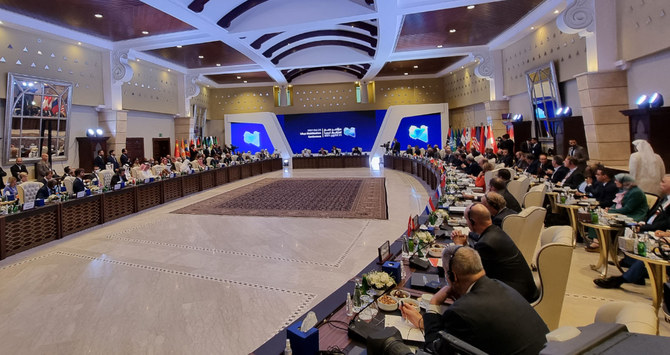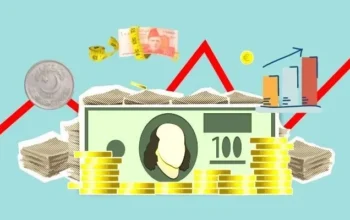This week’s 10th anniversary of the fall of the Gaddafi regime in Libya exemplifies how much of the 2010s were a wild period for international politics, with a long wave of political turbulence following the 2008-09 international financial crisis.
The fallout from that period, which left the global economic system teetering on the precipice, was profound, and not only economically. It spawned a seismic period of political volatility, and a key question in the years ahead will be whether the socioeconomic damage caused by the pandemic might create a similar legacy in the 2020s.
To some degree, the political fallout of the 2010s was partially predicted in advance. In February 2009, for instance, Hilary Clinton, then the US secretary of state, argued that “this economic crisis, left unresolved … will upend governments (and) it will unfortunately breed instability.”
Yet what wasn’t seen at that time, except perhaps by a few with exceptional foresight, was the way in which this turbulence would ultimately help shape and permeate politics, not only in emerging markets but also in long-established industrialized democracies. This perhaps reached its zenith in 2016 with Donald Trump’s election as US president, who shocked many around the world with his victory over Clinton.
However, much as 2016 might have proved to be a defining year, with the UK also voting to leave the EU, significant political volatility was a feature of the international landscape for much of the post-crisis period. Perhaps most eye-catching of all have been the political revolutions, popular uprisings and protests in emerging markets.
This includes the so-called “Arab Spring” that began in Tunisia in late 2010 and spread to include revolutionary changes of power in Libya and Egypt, the situation in Yemen, plus demonstrations and uprisings in countries as disparate as Algeria, Bahrain, Jordan, Morocco and Oman.
There was also the Ukrainian revolution of 2014, which resulted in the ousting of pro-Moscow President Victor Yanukovych, and the 2011 Azerbaijani protests against the government.
Many people are upset about economic hardships and they have seen how a disproportionate number of the rich and well-connected push to the front of the queue for medical treatment and government help.
Andrew Hammond
Yet developed countries also have taken political hits, too. In Europe, for instance, millions took to the streets and administrations in more than half of the 27 EU states fell or were voted out of office between Spring 2010 and 2012 alone. Within the core eurozone, 11 of 14 governments collapsed or lost elections during that time.
To be sure, this broad range of political instability has diverse origins, and economic issues are by no means the only driver. Unrest in the Arab world, for example, quite often stemmed from deep-seated political and socioeconomic discontent that predated the financial crisis. Post-2008, however, a number of factors including liquidity crunches, increased food prices and unemployment spikes exacerbated these longer-standing grievances.
In Europe, an economic downturn and austerity measures were central to unrest in numerous countries, especially those most affected by the eurozone crisis. Even here, though, protests tapped into preexisting disquiet; hence the meteoric rise of new groups such as Syriza, which won power in Greece from 2015-19 after being founded as a loose coalition of left-wing parties only a few years earlier.
This disparate range of political disruption around the world has been described as a revolutionary wave. Some even compared the situation to upheavals in 1848, 1914, 1968 and/or 1989.
Whatever the validity of these historical analogies, a key forward-looking question is whether higher levels of political instability are here to stay, especially with the coronavirus crisis reaping such havoc during the past 18 months. The early signs point to a possible “yes,” as in many countries, from Brazil to Belarus, the pandemic has stirred unrest.
Many people are upset about economic hardships and they have seen how a disproportionate number of the rich and well-connected push to the front of the queue for medical treatment and government help. Many are also angry that their leaders have not done a better job of containing the pandemic.
Underpinning this is the growing political salience of economic inequality. Many of those who have taken to the streets have long felt shut out of their nations’ prosperity, with rising prices of key services proving to be a tipping point. The suffering of wide cohorts of people has created a greater sense of solidarity that is fanning grievances that smoldered long before anyone had heard of COVID-19.
Another reason for surmising that instability might be here to stay is the disruptive role of social media platforms, which have become increasingly central to our lives. It has played a mobilizing role in protests that might only grow as technology proliferates.
Looking toward the post-pandemic world to come, there is therefore the significant prospect of further political unrest, with a critical uncertainty being the future trajectory of the global economy.
Even if there is a new boom ahead, instability could potentially still be fueled by intensified economic inequalities, and also longer-standing discontent to which social media is giving added expression.
• Andrew Hammond is an associate at LSE IDEAS at the London School of Economics
Disclaimer: Views expressed by writers in this section are their own and do not necessarily reflect EMRA News’ point-of-view.



